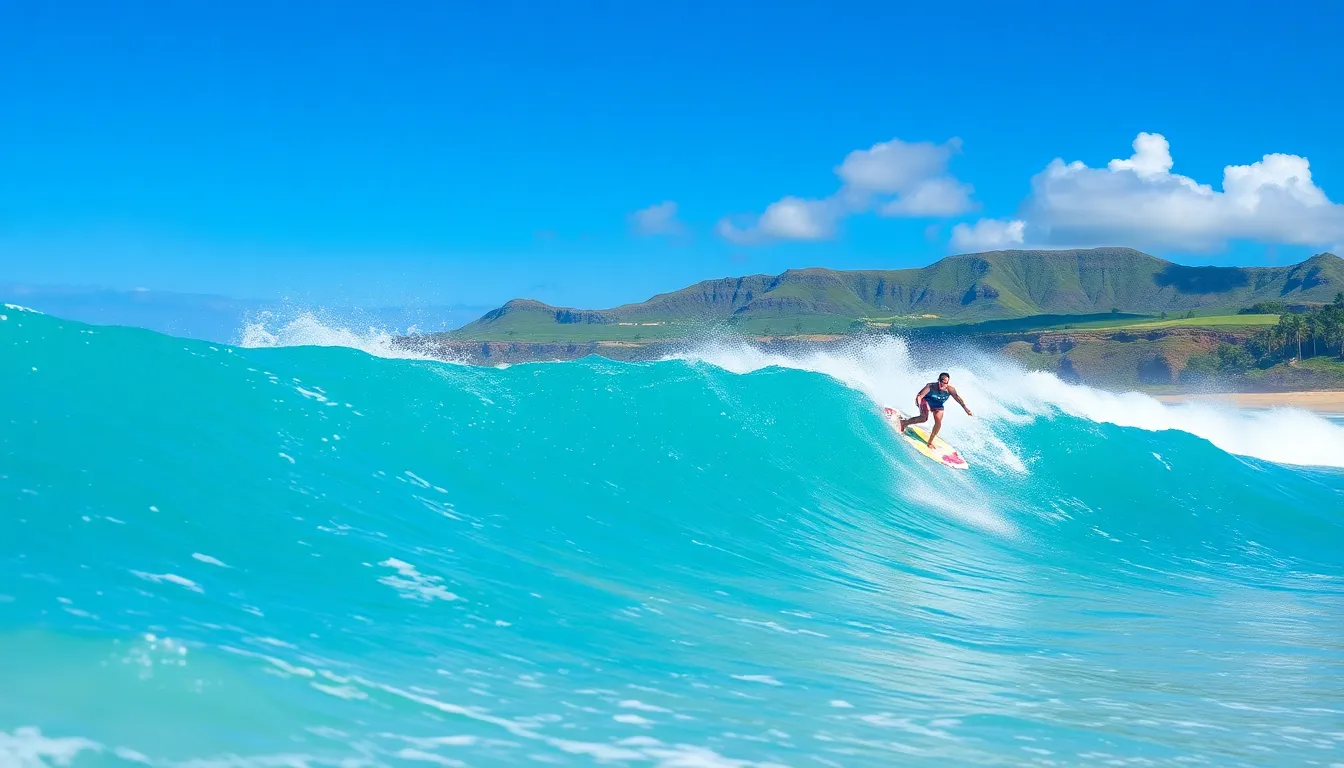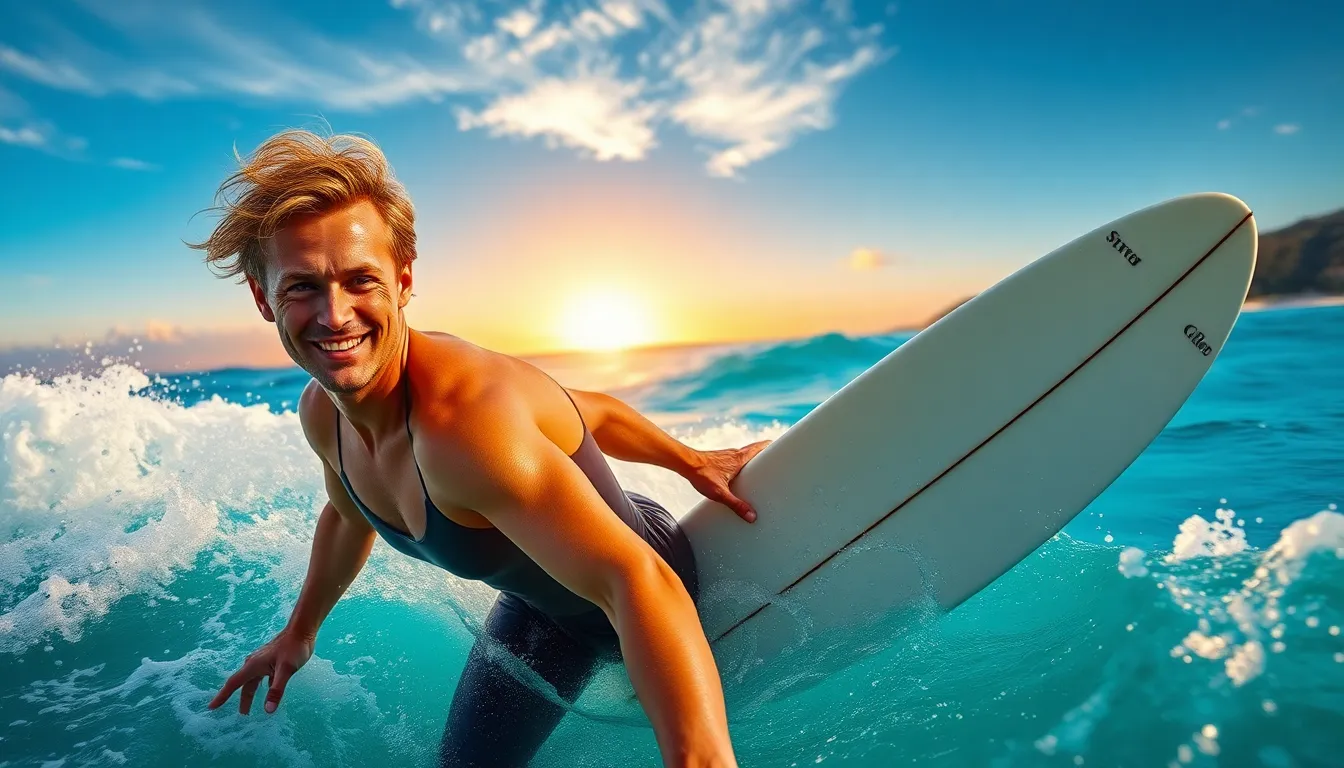Table of Contents
ToggleSurfing isn’t just a sport; it’s a lifestyle that beckons adventurers to explore the world’s most stunning coastlines. From the sun-kissed beaches of Bali to the rugged shores of Hawaii, each destination offers unique waves and vibrant cultures. For surfers seeking their next thrill, a well-crafted travel guide can make all the difference in uncovering hidden gems and navigating local surf etiquette.
In this surf travel guide, readers will discover essential tips for planning the perfect surf trip, whether they’re a seasoned pro or a beginner eager to catch their first wave. With insights on the best surf spots, gear recommendations, and local hotspots, this guide empowers surfers to make the most of their adventures. Get ready to ride the waves and immerse yourself in the exhilarating world of surf travel.
Overview of Surf Travel
Surf travel blends adventure and exploration, inviting surfers to discover diverse coastlines. It offers opportunities to connect with various surf cultures, each with unique waves and local traditions. Traveling to surf destinations like Bali, Hawaii, and Australia showcases the beauty of each locale while providing unparalleled surfing experiences.
Surf travel requires preparation to maximize enjoyment. Researching specific surf conditions, seasonal variations, and local surf etiquette enhances the experience. Destinations often cater to different skill levels, ensuring beginners and advanced surfers find suitable waves.
Considerations for surf travel include choosing the right gear. Packing essential items such as surfboards, wetsuits, and accessories ensures readiness for varying conditions. Understanding airline regulations about surfboards is crucial for smooth travel.
Exploration beyond the waves enriches surf travel. Local attractions, food, and cultural experiences provide insight into the destination. Engaging with local surfers often leads to discovering less crowded spots.
Planning surf trips involves considering accommodations. Options range from surf camps to hotels near prime surf breaks. Researching reviews helps identify the best places to stay for convenience and comfort.
Lastly, surf travel emphasizes safety. Understanding rip currents, local wildlife, and weather patterns protects surfers. Being informed about local emergency contacts ensures preparedness in case of unexpected situations.
Best Surf Destinations

This section highlights the best surf destinations worldwide, focusing on both popular surf spots and hidden gems. These locations cater to various skill levels and offer unique experiences.
Popular Surf Spots
- Bali, Indonesia
Bali features consistent waves, vibrant surf culture, and stunning beaches. Uluwatu and Kuta attract many surfers, offering different wave types suitable for beginners and advanced surfers alike.
- Hawaii, USA
Hawaii stands as the birthplace of surfing, with iconic spots like Waikiki and Pipeline. Each beach presents challenges, making it a must-visit for serious surfers.
- Gold Coast, Australia
The Gold Coast boasts famous breaks like Snapper Rocks and Burleigh Heads. These locations offer reliable surf conditions and a bustling surf community.
- Jeffreys Bay, South Africa
Known for its long, progressive right-hand point break, Jeffreys Bay is a favorite among advanced surfers. The region’s natural beauty enhances the surfing experience.
- Margaret River, Australia
This destination combines stunning scenery with world-class waves and is famous for its powerful surf breaks like Main Break and The Box.
Hidden Gems
- Nazaré, Portugal
While known for monstrous waves, Nazaré also has approachable surf spots for less experienced surfers. Off-season surf conditions are ideal for exploration.
- Lima, Peru
Lima’s coastline includes excellent surf spots such as Punta Hermosa and Punta Sal, featuring favorable year-round conditions and uncrowded beaches.
- El Salvador
Locations like Punta Roca and La Libertad maintain consistent surf while remaining under the radar for many travelers. The local culture and cuisine enhance the experience.
- Sri Lanka
Sri Lanka offers varied surf spots like Hikkaduwa and Arugam Bay, catering to all skill levels amidst breathtaking landscapes and inviting locals.
- Costa Rica
Lesser-known spots like Pavones and Nosara provide perfect waves and a laid-back atmosphere. Surfers can explore stunning beaches and rich biodiversity.
Planning Your Surf Trip
Planning enhances the enjoyment of a surf trip. Key factors include understanding the best timing for surf conditions and packing essential gear.
Timing and Seasons
Timing significantly influences surf conditions. Peak surf seasons vary by location, typically aligning with local weather patterns and swells. Research specific destinations:
- Bali: Consistent surf from April to October due to dry season swells.
- Hawaii: Bigger waves from November to February; ideal for experienced surfers.
- Gold Coast, Australia: Best waves between March and May, with fewer crowds.
- Jeffreys Bay, South Africa: Optimal surf conditions occur during winter months, June through August.
Monitor local forecasts for precise swell predictions. Understanding seasonal variations ensures surfers choose the right time to maximize their experience.
Packing Essentials
Packing essential gear ensures preparedness and comfort on surf trips. Consider these must-have items:
- Surfboard: Choose a board that complements skill level and wave conditions.
- Wetsuit: Select thickness based on water temperature; thicker suits for colder regions.
- Rash Guard: Opt for lightweight options to protect against sunburn and board rash.
- Surf Accessories: Include leashes, fins, and repair kits for emergencies.
- Travel Gear: Pack sunscreen, reusable water bottles, and sandals for convenience.
Create a checklist based on destination-specific requirements. Prepare in advance to avoid any last-minute hassles and ensure a smooth surfing experience.
Tips for Beginner Surfers
Beginner surfers can make the most of their surfing experience by focusing on essential lessons and safety practices. These tips will help them navigate the waves with confidence.
Finding the Right Lessons
Finding the right surf lessons contributes significantly to skill development.
- Research Local Schools: Look for reputable surf schools with certified instructors. Customer reviews on platforms like Google and Yelp can guide your choice.
- Tailored Instruction: Select lessons tailored to individual skill levels. Beginners benefit from programs focusing on basic techniques, such as paddling, balance, and wave positioning.
- Small Class Sizes: Opt for small group sizes. More personalized attention enhances learning and safety.
- Equipment Provided: Ensure the school provides necessary equipment like foam surfboards. These boards are safer and easier for beginners to handle.
- Location Benefits: Choose lessons in beginner-friendly locations. Gentle beach breaks typically provide ideal conditions for learning.
Safety Considerations
Safety remains a crucial aspect of surfing.
- Awareness of Rip Currents: Understand how rip currents operate. Beginners should learn to recognize these currents and know how to escape if caught.
- Proper Equipment Usage: Use the right gear, including a surf leash and a properly fitted wetsuit. These items enhance safety and comfort while surfing.
- Watch for Wildlife: Be vigilant about local wildlife, including jellyfish and sharks. Researching the area before surfing can help avoid unexpected encounters.
- Check Weather Conditions: Monitor surf forecasts and weather conditions. Unsafe weather can lead to hazardous surf situations, particularly for beginners.
- Surf with Others: Always surf with a buddy or in a group. This practice provides support and assistance in case of emergencies.
Surf Culture and Local Etiquette
Surf culture encompasses a set of practices, beliefs, and social norms among surfers. Respecting local etiquette fosters positive interactions and enhances the overall surf experience.
Understanding Local Etiquette
- Respect Lineups: Each surf spot has a designated lineup where surfers wait their turn. Dropping in on someone’s wave is considered disrespectful and can lead to conflicts.
- Communicate Clearly: Use hand signals to indicate intentions, ensuring that others understand which wave is yours.
- Wait Your Turn: Allow locals or experienced surfers priority, particularly at crowded spots. Doing so showcases respect for the local surf community.
- Be Mindful of Environment: Preserve local ecosystems by cleaning up after yourself. Dispose of trash properly and refrain from disturbing wildlife in surf areas.
- Show Gratitude: A simple nod or “thank you” to fellow surfers promotes a friendly environment and strengthens community bonds.
Embracing Local Culture
- Learn Local Customs: Each region has unique traditions and practices. Understanding these customs enriches the surf experience.
- Engage with Locals: Interact respectfully with local surfers. Sharing stories and experiences fosters connections and enhances cultural appreciation.
- Participate in Local Events: Join community surf contests or beach clean-ups. Such activities not only support local culture but also build friendships.
Safety Considerations
- Be Aware of Conditions: Understand local surf conditions, including tides and currents. Respect locals’ warnings about hazards.
- Wear Appropriate Gear: Choose the right wetsuit or surf accessories based on local climate and water temperature to ensure comfort and safety.
- Follow Local Guidelines: Each surf spot may have specific rules and regulations. Adhering to these is essential for safety and respect.
Following these guidelines fosters harmony and shared enjoyment among surfers, promoting a positive surf culture that benefits all participants.
Embarking on a surf travel adventure opens up a world of exploration and connection with diverse cultures. With the right preparation and knowledge, surfers can enhance their experiences and discover both iconic spots and hidden gems. Understanding local etiquette and safety measures ensures a respectful and enjoyable journey.
Whether it’s riding the waves in Bali or soaking in the vibrant culture of Costa Rica, each destination offers unique opportunities for growth and enjoyment. By embracing the surf lifestyle and engaging with local communities, surfers can create lasting memories that go beyond the sport itself.




